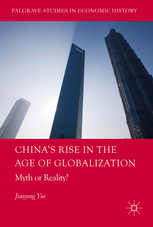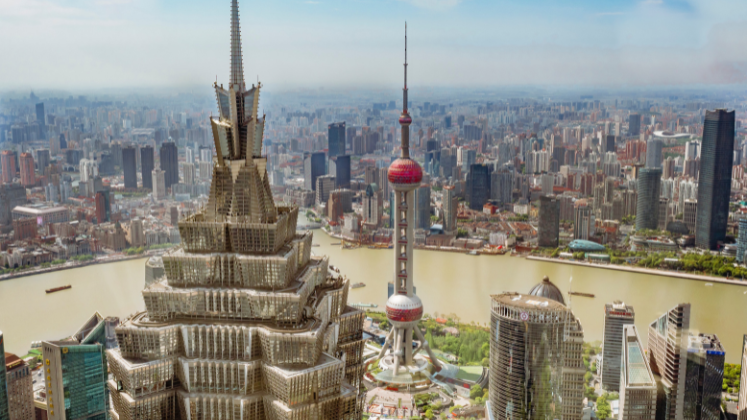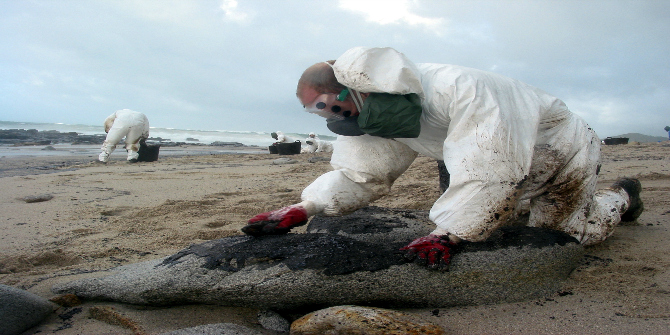In China’s Rise in the Age of Globalization: Myth or Reality?, Jianyong Yue challenges conventional narratives on China’s rise, examining its reform and opening-up process from the late 1970s onwards. The book contributes to research on China’s economic history and will appeal to readers across development studies, international relations and political economy, writes Yao Han.
China’s Rise in the Age of Globalization: Myth or Reality? Jianyong Yue. Palgrave. 2018.
 Find this book (affiliate link):
Find this book (affiliate link):![]()
Since 1978 China’s economy has grown quickly from a very poor state in a world dominated by other developed countries. Nations invited by the latter to develop could enjoy their guidance and assistance and would generally obey the order set by them in turn. China, large both in area and population, is one of the few socialist countries in the world. Its rise potentially poses challenges to the world order, yet China is also affected by other countries. While documenting China’s high economic growth in China’s Rise in the Age of Globalization: Myth or Reality?, Jianyong Yue reminds readers of the inhibited nature of its process of catch-up despite its great endeavours.
Yue argues that China as a large country has pursued an outward strategy better suited to that of a smaller nation. The possibility of an autarkic China first vanished in 1840 when it was invaded by the West. The Chinese Communist Party (CCP), the ruling party of China, was subsequently established under the guide of the Soviet Russia-controlled Communist International (Comintern) in the 1920s, suggesting key potential influences on the development route.
Between the establishment of the People’s Republic of China in 1949 and 1978, its development strategy focused on investment in heavy industry. The first Five-Year Plan (1953-57) and the 156 heavy industrial projects laying the foundation for China’s socialist industrialisation were carried out successfully under massive Soviet sponsorship. Though Mao Zedong claimed a higher ratio of state investment in light industry and agriculture in his report ‘On the Ten-Pair Grand Relations’, delivered to the CCP’s Politburo in April 1956, the Second Five-Year Plan (1958-62) was marked by the Great Leap Forward (GLF). This followed the Stalinist approach and emphasised heavy industrialisation while sacrificing light industry and agriculture as well as instigating the Great Famine in which many millions of people in rural China died. This resulted in the determination of China’s liberal intellectuals and ruling elites to fundamentally change both the nation’s development strategies and its attitudes towards the outside.

Photo by Alexander Schimmeck on Unsplash
On the one hand, the resulting investment strategy’s focus changed from heavy to light industry and from a number of defence industry enterprises to consumer goods production in the 1980s. As the development of those industries significantly affected the country’s material capability, this change in industrial investment strategy was bound up in the simultaneous transformation of China’s policies towards external relations.
On the other hand, the change in development strategy was also reflected in the acceptance of differential growth in terms of both regions and people in the period. According to Yue, having some geographical areas and people becoming rich first at the preliminary stage of socialism contradicted the doctrine of ‘egalitarianism’ held by the entire Communist leadership. The socialist welfare principle embodied in the so-called ‘three irons’ (iron wage, iron rice bowl and iron management position) (santie) was repudiated to promote efficiency-based marketisation reforms. In addition, free medicare, education and housing, supposed to be inefficient, were abolished at the end of the 1990s.
The reform of state-owned enterprises (SOEs) accompanied the process of joining the World Trade Organisation (WTO). A massive number of workers were laid off from SOEs during the ‘protect the large, release the small’ (zhuada fangxiao) reforms beginning in 1995. In 1996, for the first time, SOEs across all industries experienced net losses. Up until 2002, around 30 million SOE workers were laid off. The shrinkage in SOEs would dampen domestic demand. Subsequently, from 1998, multinational corporations (MNCs) started to shift to produce increasingly for global markets and were further integrated into the global supply chain. The Chinese economy further deteriorated due to floods at home and the financial crisis in East Asia at the end of the 1990s. From 1998, Chinese leaders therefore called for an expansion of domestic demand.
In addition, according to Yue, MNCs gained de facto control of 21 out of 28 major industrial sectors of China. Though SOEs’ total output grew rapidly, the percentage of the industrial value added to GDP by SOEs kept decreasing, while that taken up by foreign-invested enterprises (FIEs) kept increasing throughout the 1990s. What is worse, the unwanted products of SOEs accumulated.
Concerned by this situation, Chinese leaders started to introduce a set of industrial policies to boost indigenous innovation from 2006 onwards. The efficacy of indigenous innovation through co-innovation and re-innovation based on assimilation of imported technologies relied on the advanced nature of the technology transferred to Chinese partners and the degree of indigenous innovation by Chinese firms based on transferred technologies. According to Yue, overseas investors might not transfer know-how or intellectual property rights as a licence, or they might not transfer the technology for key elements or the most advanced technologies. Yue argues that China still has a long way to go to transform from relying on imported technology to original innovation. For example, compared to Japan and South Korea, China’s medium and large-sized SOEs across the country’s industrial sectors invested much less in assimilation or absorption of technology and much more in imports.
One can imagine how many people were affected in the development process and the difficulties faced by Chinese reformers. Joining the WTO was expected to enable China to forge ahead with the domestic reforms that had encountered vast difficulties and to repower domestic economic growth. Yue documents and analyses the long struggle of China’s entry into the WTO. China was criticised for its poor market access and a murky trade regime. Its bilateral talks were difficult to progress, despite China’s endeavours in both domestic and international affairs to smooth the process. Nonetheless, other aspects, such as the psychology of Chinese majorities and their knowledge of international political economy, also facilitated the process.
Psychologically, the notion of ‘worship the foreign’ (chongyangmeiwai) among both the elites (mainly bureaucrats and SOE managers) and the general public helped to promote and embrace globalisation and generate support for joining the WTO. This psychology was also reflected in the trust that China’s Politburo placed in some overseas opinions. Yue points out that many Chinese International Relations (IR) scholars did not understand modern economics. Few liberal economists and thinkers were familiar with even the basic concepts of IR, and they tended to view US hegemony as benign only. Very few scholars in development studies in China were aware of the roles that the WTO played outside of development.
These sensibilities and the knowledge gap between China and other nations created a relatively harmonious environment for a period of time. With the knowledge gap diminishing, the risk of fiercer frictions increased. It might benefit long-lasting peace and sustainable development if all countries jointly and continuously nurture a friendly relationship aimed towards a better and wealthier common future by being willing to sacrifice some margins of relative gains when bound by the scarcity of resources given the rules of the game.
It is very difficult for China to stop being integrated with the outside. Yue argues that China’s extensive market access commitments, together with the mechanisms for routine monitoring of China’s compliance specifically created inside the US and the WTO, have institutionalised China’s deep integration. The rise of protectionism might nonetheless cause frictions. Without keeping a space for itself domestically, it is hard for China to seek autarky or even just development. Facing rising inequality and the increasing solidity of social classes, China needs to build up new types of welfare systems and accommodate the political pursuits of different interest groups.
The state of affairs raised by Yue poses challenges to governance: if the interdependence among countries is the mutual dependence of the rich and powerful that are increasingly interchangeable and the poor’s value only lies in their low labour cost and their large numbers, the positioning of large numbers as an advantage for market potential could contribute to instability. If states’ ruling elites fail to reform to give due consideration to social justice and provide good lives for all, it can be expected that there may be revolution in scattered places, followed by the collaboration of proletariats all around the world, intertwined with interstate conflicts.
China’s Rise in the Age of Globalization contributes to the research on China’s economic history after its adoption of the reform and opening-up policy in 1978 by critically examining it from the perspective of the interactive relationship between China’s domestic economic growth, domestic politics and IR dynamics in the globalisation era. It invokes questions on the development model in an increasing globalised world based on China’s practices after 1978. China received aid and followed development models, but this aid could stop and the development model could turn out to be harmful. China is large, but this was not enough for ideas of how to achieve development to emerge domestically. Dating back to the 1890s, China was rich, but not rich enough to defend itself. Reviewing the history of recent decades, China’s growth has been prominent, but cannot be taken as development, according to Yue. This book will be of interest to readers in economic history, development studies, international relations and political economy as well as those studying international organisations and global governance.
- This review first appeared at LSE Review of Books.
- Please read our comments policy before commenting.
- Note: This article gives the views of the author, and not the position of USAPP – American Politics and Policy, nor of the London School of Economics.
- Shortened URL for this post: https://bit.ly/3Doa6nR






